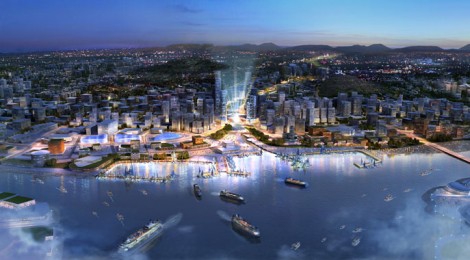
Cities 2013
The mistake that architects made a century ago was to envisage the city of the future in terms of aesthetics. Such a view, is doomed to failure. The key is to begin to understand a city not just in physical terms – and even then to think primarily in terms of density, intensity and use rather than aesthetics – but also in terms of its social and economic framework.
There follow some principles which designers can apply to urban development:
- First and foremost, however big the city gets, the building block is the neighbourhood / community. This very human scale has been forgotten in some of the more triumphalist visions of new cities.
- Secondly, whether the subject is the growth of an existing city or a completely new city, there is always a context. This context ensures that the urban forcefield sparks in subtly different ways in different places. Context delivers uniqueness, uniqueness underpins differentiation. Distinctiveness will arise naturally from context, so the urban solution will be based on understanding of culture and place.
- Thirdly, successful cities will be polycentric and therefore growth should deliver new loci, new pieces of the city, not mono-functional retail districts or commuter suburbs. This is not the same as saying that every addition to the city has to be self contained– cities function and economies grow because of interaction – but city growth should always be positively driven, not simply as management of problems. Periodically this requires the city leaders to take bold moves to set a framework and new direction, thus city development is episodic, a circadian cycle of planning and delivery.
- Fourthly, cities must be liberally endowed with sources of ideas and creativity, as universities and research facilities are often the starting point of entrepreneurship and economic success. The focus should not be on managing city decline but on reinvention. Not all planners have grasped this and in places governments have pushed construction and infrastructure projects which are not fixes for decline, however helpful they might be once renaissance is underway.
- The fifth principle is that urban-rural dichotomies are counterproductive. Think instead of an integrated system and mutual dependency. There is much talk of ‘closed’ systems, but there is also a misconception that these have to be limited, contiguous urban areas. A closed system can just as easily extend to the resource hinterland of rural areas. Cities allow half of humanity to live on around 4% of the potential arable land, leaving more space for open country and food production. In fact the highly popular ‘back-to-the land’ environmentalists’ ethic and weekend homes , both characteristic of wealthy societies and elites, is highly damaging to the prospects of long term global sustainability.
- And finally, technology must be subservient to human endeavour, not a solution looking for a problem. There has been an explosion of data in recent times, with wider access than ever before, brought about by the speed, capacity and social nature of data networks. Technology companies are good at finding new ways of managing data, enabling existing systems to work more efficiently and are desperate to find commercial applications. But however ‘smart’ a city is technologically, the successful city is one that uses technology as part of the solution, not the end in itself.